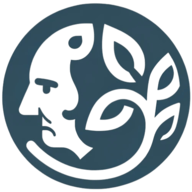How Do You Maintain the Safety of a Retirement Community?
Ensuring the well-being of seniors in retirement communities is a multifaceted challenge requiring vigilant attention to safety protocols. From leveraging cutting-edge monitoring technologies to instituting stringent visitor guidelines, these environments are adapting to protect their vulnerable residents. Continuous staff training and proactive infrastructure improvements further fortify these havens against various health crises.
- Enhanced Communication During Health Crises
- Strict Visitor Protocols Ensure Safety
- Advanced Monitoring Technologies
- Continuous Staff Education
- Rigorous Employee Screening
- Proactive Community Infrastructure
Enhanced Communication During Health Crises
The senior living industry faces challenges in ensuring resident safety during health crises, like the pandemic, particularly regarding infectious disease management. Initial strict isolation measures promoted safety but caused loneliness and depression among residents. To address this, a proactive strategy was implemented, enhancing communication and personal connections, including a digital platform to keep residents engaged and foster community life while maintaining safety protocols.

Strict Visitor Protocols Ensure Safety
Implementing strict visitor protocols involves verifying the identity of every individual entering the community. This precaution helps to ensure that only authorized people have access to the residents. In addition, maintaining a log of visitors can help track any unusual activity.
Restricting visitor access to certain hours can also minimize disruptions and potential safety risks. Help promote a secure environment by advocating for comprehensive visitor policies.
Advanced Monitoring Technologies
Utilizing technology for monitoring includes installing cameras and alarm systems throughout the community. These systems can help keep a watchful eye on common areas and entrances. Additionally, emergency call systems in individual apartments ensure that residents can quickly alert staff if needed.
Regular maintenance of these technologies ensures they function properly at all times. Support modern safety measures by encouraging the use of advanced monitoring technologies in retirement communities.
Continuous Staff Education
Providing regular staff training ensures that all team members are prepared to handle any situation. Training on emergency procedures, first aid, and conflict resolution is essential. Keeping staff updated on the latest safety protocols improves their response capabilities.
This readiness can significantly impact the overall safety of the community. Advocate for continuous staff education to enhance the well-being of all residents.
Rigorous Employee Screening
Conducting thorough background checks on potential employees helps ensure they have no criminal history. This vetting process is crucial to hiring trustworthy staff. Knowing that employees have been carefully screened provides peace of mind to residents and their families.
Consistent re-evaluation of staff can further uphold high safety standards. Encourage the commitment to rigorous screening procedures in retirement communities.
Proactive Community Infrastructure
Designing for accessibility and safety includes ensuring that all areas are easy to navigate. Features like handrails, ramps, and well-lit hallways can mitigate the risk of falls. Emergency exits should be clearly marked and easily accessible.
Regularly inspecting these features helps maintain a safe environment. Promote a thoughtful and proactive approach to community infrastructure to protect residents and ensure their comfort.

